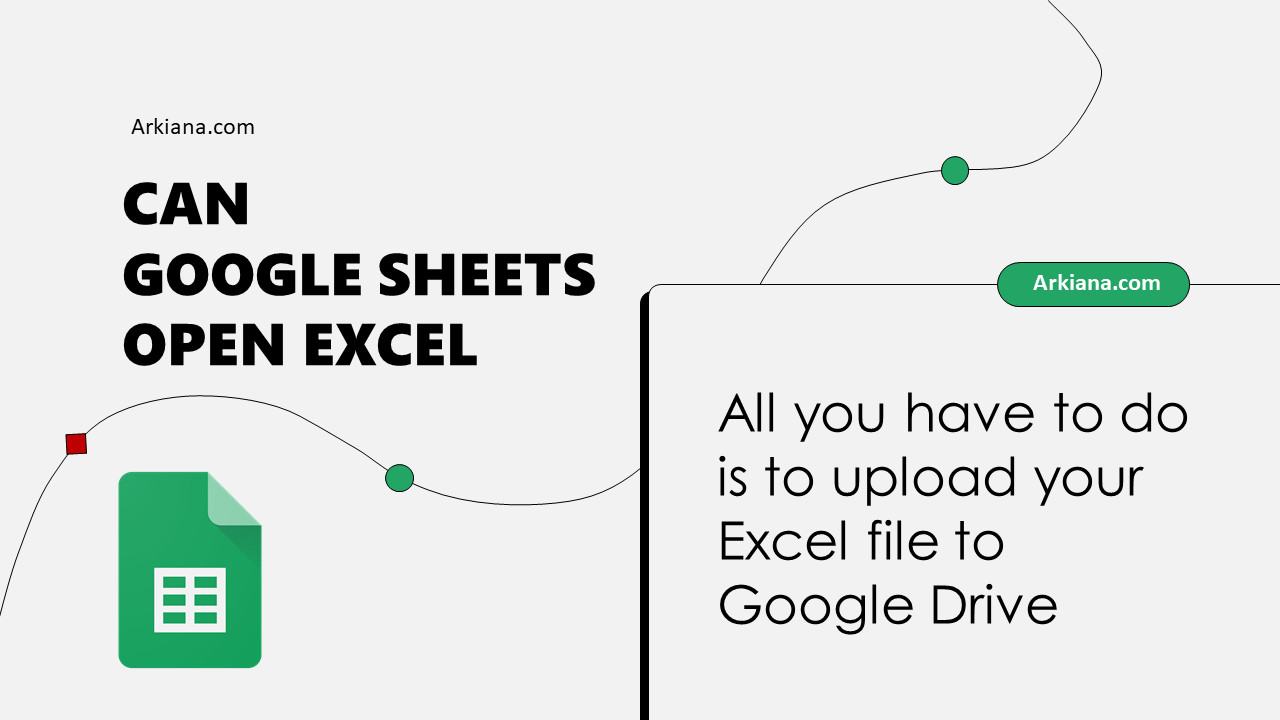5 Ways to Open Excel Files in Google Sheets

The collaboration between Microsoft Excel and Google Sheets opens up a world of possibilities for data handling and analysis. While Excel is renowned for its robust data management capabilities, Google Sheets provides an edge with its cloud-based features, enabling real-time collaboration. Below are five effective ways to transfer and open your Excel files in Google Sheets:
1. Uploading to Google Drive


- Navigate to Google Drive via drive.google.com or through your Google account’s interface.
- Click on the + New button, then select File Upload.
- Choose the Excel file you want to upload from your local drive.
- Once uploaded, find the file in Google Drive. Right-click on the file and choose Open with, then select Google Sheets.
- The Excel file will now open in Google Sheets, ready for use or editing.
2. Using the Import Function

For direct integration without manually uploading:
- In an existing or new Google Sheets, go to File in the top menu, then select Import.
- You’ll be presented with options to upload a file. Choose your Excel file.
- Select how you want the data to be imported: replace the current sheet, create a new sheet, or add to the current sheet.
- After import, review and adjust the data as necessary.
🔍 Note: The import function is particularly useful for one-time or occasional conversions.
3. Via Email Attachments

- When you receive an Excel file via email, download it to your computer.
- Follow the upload steps outlined above to move the file to Google Drive.
- Once the file is in Google Drive, open it with Google Sheets.
4. Direct URL Linking

When sharing Excel files online, you can link directly to the Google Sheets version:
- Upload your Excel file to Google Drive.
- Find the file in Google Drive, right-click, and choose Get Shareable link.
- Share the link which will open the file in Google Sheets when clicked.
- Optionally, change the permission settings to control who can access the document.
5. Add-ons and Extensions

Using add-ons can streamline the process:
- Go to the Google Sheets extension store or within Google Sheets, navigate to Extensions > Add-ons > Get add-ons.
- Search for Excel-compatible add-ons like “Power Tools,” “Excel Import Tool,” or “Yet Another Mail Merge.”
- Install the desired add-on and follow its instructions to import your Excel file into Google Sheets.
Many add-ons offer extra features like automatic file conversion, scheduled imports, or even exporting Google Sheets back to Excel format.
Opening Excel files in Google Sheets provides cloud-based advantages like real-time collaboration, auto-saving, and version control. While basic functionality remains similar, some advanced Excel features might not translate directly. Remember to:
- Ensure compatibility with Excel's advanced functions.
- Check for updates in Google Sheets that might improve compatibility or introduce new features.
- Understand that Google Sheets might not have all the formulas or data handling capabilities of Excel.
With these methods, you can seamlessly integrate your Excel data into the collaborative environment of Google Sheets, enhancing productivity and team synergy.
What are the main differences between Excel and Google Sheets?

+
Excel offers more robust data analysis tools and advanced features like VBA macros, while Google Sheets excels in real-time collaboration, auto-saving, and accessibility from any device with internet access.
Can I edit an Excel file directly in Google Sheets?

+
Not directly; you’ll need to convert or import the Excel file into Google Sheets first. After conversion, you can edit it like any other Google Sheets document.
How do I revert Google Sheets back to an Excel file?

+
Go to File > Download as > Microsoft Excel (.xlsx). This action will download your Google Sheet document in Excel format.
Are there any file size limitations for importing Excel files into Google Sheets?

+
Yes, Google Sheets has limitations on file size and data import. The maximum file size is approximately 25 MB, and there are restrictions on cell content, rows, columns, and formulas that can be used.



